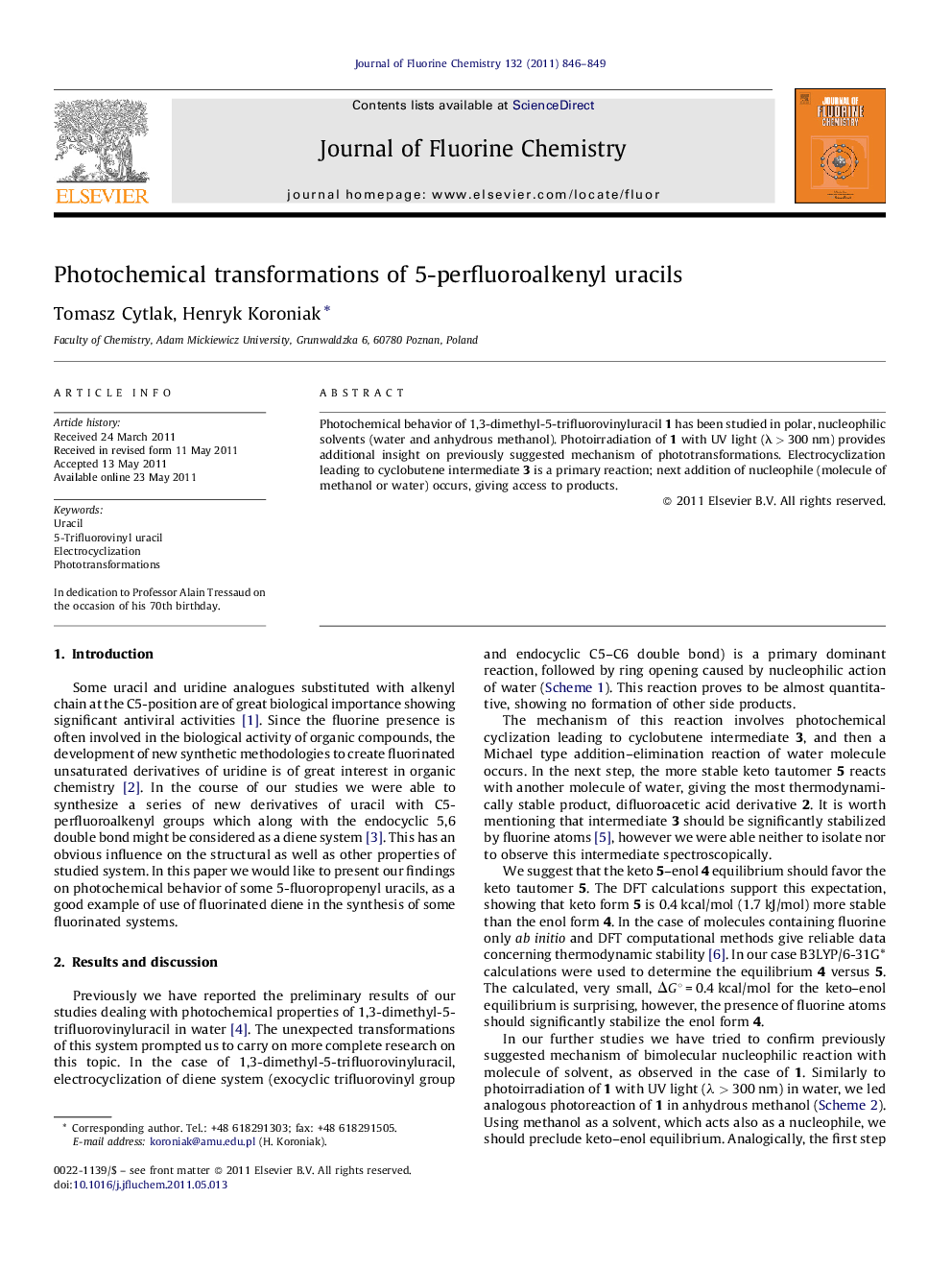| Article ID | Journal | Published Year | Pages | File Type |
|---|---|---|---|---|
| 1314408 | Journal of Fluorine Chemistry | 2011 | 4 Pages |
Photochemical behavior of 1,3-dimethyl-5-trifluorovinyluracil 1 has been studied in polar, nucleophilic solvents (water and anhydrous methanol). Photoirradiation of 1 with UV light (λ > 300 nm) provides additional insight on previously suggested mechanism of phototransformations. Electrocyclization leading to cyclobutene intermediate 3 is a primary reaction; next addition of nucleophile (molecule of methanol or water) occurs, giving access to products.
Graphical abstractPhotochemical behavior of 1,3-dimethyl-5-trifluorovinyluracil 1 has been studied in polar, nucleophilic solvents (water and anhydrous methanol). Photoirradiation of 1 with UV light (λ > 300 nm) provides additional insight on previously suggested mechanism of phototransformations. Electrocyclization leading to cyclobutene intermediate 3 is a primary reaction; next addition of nucleophile (molecule of methanol or water) occurs, giving access to products.Figure optionsDownload full-size imageDownload as PowerPoint slideHighlights► Photochemical behavior of 1,3-dimethyl-5-trifluorovinyluracil has been studied in polar solvents (water and anhydrous methanol). ► Formation of cyclobutene ring is a primary reaction of these processes. ► The subsequent reaction with nucleophiles (water or methanol) give access to products.
